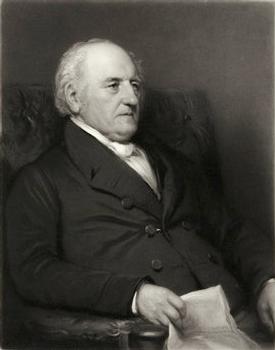English mathematician and physicist
Biographical Information
| Name: | Peter Barlow |
|---|---|
| Born on | 13 October 1776 in Norwich, Norfolk, East of England, England, United Kingdom, Europe |
| Deceased on | 1 March 1862 in London, England, United Kingdom, Europe |
| Father of | Peter William Barlow, William Henry Barlow |
Short biography of Peter Barlow
Right from the start of his working life, Peter Barlow pursued his passion for mathematics and other sciences in his spare time. This led him to found a scientific society in which young people could discuss a wide range of scientific topics.He later became a teacher, and served on the teaching staff of the Woolwich Royal Military Academy from 1802 until his retirement in 1847. Barlow worked in various fields, e. g. mathematics, magnetism, strength of materials, performance of locomotives. His most important contribution to the strength of materials [Barlow,1817] was the first British monograph on this subject and had a profound influence on the science of strength of materials during the constitution and establishment phases of structural theory. Barlow’s book represents a convincing description of mathematical analyses and the strength tests he carried out with great care in his laboratory in Woolwich. He used his brilliant intellect to solve significant technical problems of the day, whether as consultant for Telford’s suspension bridge over the Menai Strait (1817) or in overcoming errors in ships’ compasses (1825). In just a few years he became the leading experimenter in the field of electromagnetism. He was elected to the Royal Society in 1823. His analysis of the load and pressure relationships of Bramah’s large hydraulic press led in 1825 to reliable and safe design principles. He received inquiries from all over Europe concerning problems in shipbuilding, military matters and countless other scientific and technical fields.
Main contributions to structural analysis:
An Essay on the Strength and Stress of Timber [1817]; Experiments on the transverse strength and other properties of malleable iron with reference to ist uses for railway bars; and a report founded on the same, addressed to the directorsof the London and Birmingham Railway Company [1835]
Source: Kurrer, Karl-Eugen The History of the Theory of Structures, Wilhelm Ernst & Sohn Verlag für Architektur und technische Wissenschaften GmbH, Berlin (Deutschland), ISBN 3-433-01838-3, 2008; p. 714-715
Relevant Publications
- (2008): The History of the Theory of Structures. From Arch Analysis to Computational Mechanics. 1st edition, Wilhelm Ernst & Sohn Verlag für Architektur und technische Wissenschaften GmbH, Berlin (Germany), ISBN 978-3-433-01838-5, pp. 714-715.
- (2018): The History of the Theory of Structures. Searching for Equilibrium. 2nd edition, Wilhelm Ernst & Sohn Verlag für technische Wissenschaften, Berlin (Germany), ISBN 978-3-433-03229-9, pp. 967.
- Peter Barlow, 1776-1862. In: Minutes of the Proceedings of the Institution of Civil Engineers, v. 22, n. 1863 ( 1863), pp. 615-618.
- About this
data sheet - Person-ID
1009690 - Published on:
19/04/2013 - Last updated on:
22/07/2014




